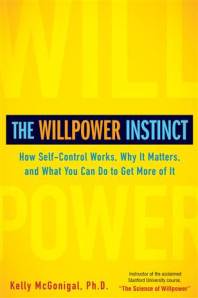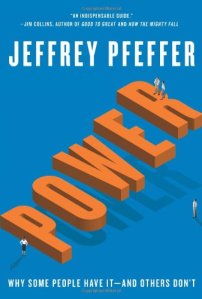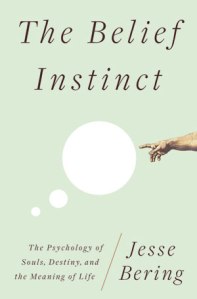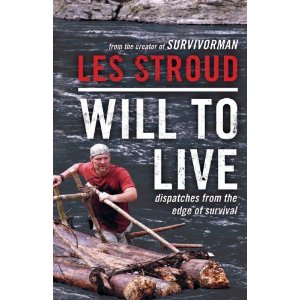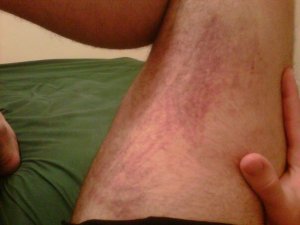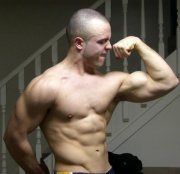The term Superfood generally refers to foods that deliver a lot of nutrition relative to their volume.
In other words – Superfoods are foods that are nutritionally dense.
Nutrient density is a measure of the amount of nutrients a food contains in comparison to the total number of calories. A food is more nutrient dense when the level of nutrients is high in relationship to the number of calories the food contains.
An example would be the difference between 200 calories of blueberries vs. 200 calories of cake. With the blueberries you get much more in the way of vitamins, minerals, antioxidants, etc (the micro-nutrients). With the cake you would receive the same amount of calories (energy), but you wouldn’t be getting the additional nutrition in the form of healthy micro-nutrients. The overall energy is the same yet the foods provide vastly different nutrition profiles.

Delicious, but mostly void of nutrition.
For the record, I believe the term Superfood is not a formally recognized term and as such I am appropriating it to suit the context of this article (to make a point about nutritionally dense foods). You may find the term used elsewhere and I believe most writers use it in the much same manner.
Without further ado – some of the benefits of Superfoods are:
- Weight-management/Weight-loss. It is normally difficult to overeat Superfoods. When was the last time you saw someone have an uncontrollable spinach binge? Many Superfoods contain plenty of fiber, good fats and proteins – helping to satisfy appetite and satiate the body appropriately.
- More Vitality. Superfoods can help one have a sustained feeling of energy throughout the day. Replacing bad fats (trans/industrial vegetable oils) and added sugars with nutrient dense wholefoods will transform the way one feels.
- Healthy Organs and Strong Immune System. Providing the body ample nutrition (vitamins, minerals, antioxidants and phytonutrients) will help keep cells healthy and ensure optimal functioning, bolstering the immune system and allowing the organs to work optimally. Remember you are what you eat; what you eat ends up as the building blocks of your cells, tissues and organs. Who doesn’t want a healthy heart and a well nourished brain?
- Age Appropriately (read: slower than most everyone!). When your body has enough nutrition to stay in a comfortable homeostasis it won’t have to sap resources internally or overly stress the bodies systems to simply survive.
Before jumping into the Superfoods I want to highlight, perhaps a bit of context would be useful. I wouldn’t want someone to think that because they ate some broccoli or a brussel sprout they have the freedom to hit the Pizza Hut lunch buffet without consequence. It doesn’t work that way; everything you eat counts – so – make what you eat count!
I believe ones diet should be made up of mostly whole foods, with a strong focus on proteins and healthy fats and a balance of starchy and non-starchy carbs. Carbs are not to be avoided, rather, consumed appropriately. A general rule of thumb is the more active you are the more carbs you can afford in your diet (keep in mind you can almost always afford green leafy carbs but not generally as much when it comes to their starchy brethren).
I’ve written before on what I considered My Top 10 Foods, and espoused more from the viewpoint of a “balanced diet.” At the end of the day, I believe the aim should be to have a nice balance of the macro-nutrients (protein, fat, carbs) and micro-nutrients (vitamins, minerals, fiber, antioxidants, etc) appropriate for your lifestyle and fitness goals.
The following are a handful of Superfoods that I want to bring attention to:
Coconut
Coconut has been slammed with unjust vilification in the past and thrown under the bus because of its high saturated fat content. Thankfully research and common sense is prevailing and this Superfood is regaining its status as being super-healthy. Note that not all saturated fats are created equal – in the case of coconuts the fats are tremendously beneficial. Coconuts contain MCT’s (medium chain triglycerides) which are quickly metabolized into energy. Consuming MCT’s has a host of benefits:
“Eating foods containing MCT is like putting high octane fuel into your car. The car runs smoother and gets better gas mileage. Likewise, with MCT your body performs better because it has more energy and greater endurance. Because MCFA are funneled directly to the liver and converted into energy, the body gets a boost of energy. And because MCFA are easily absorbed by the energy-producing organelles of the cells, metabolism increases. This burst of energy has a stimulating effect on the entire body.” Source

Most definitely a Superfood.
Nature has a way of showing us which foods are good for us. For example, human breast milk contains high levels of MCTs! That’s right – human breast milk contains saturated fats in the form of MCT’s.
If that isn’t enough, MCT’s are also highly antimicrobial and antiviral, providing extra protection for the immune system. Another benefit is that MCT’s help support a balanced complexion. The list goes on and on.
When it comes to coconut products the two I recommend most highly are pure Coconut Oil (go organic) and Shredded Coconut (organic again). Coconut water and milk don’t deliver the same amount of nutrition, yet remain a healthy substitute to most beverages (including cow’s milk).
Eggs
Eggs are another food that has been aggressively thrown under the bus in the past but has regained its status as one of the best Superfoods out there. The confusion about the nutritional impact of eggs comes from a long line of shoddy science and some unfortunate media coverage. The truth is eggs are one of the best foods on the planet. There are tons of experts out there who have shed light on the topic, for a succinct summary check out Jonny Bowden’s article – “Remember the Incredible, Edible Egg.” One of the key learnings with the prevailing research is that the cholesterol in eggs has almost no effect on cholesterol in your blood – so do yourself a favor and embrace the egg!
Coming in around 70 calories per egg, this food is seriously nutritionally dense. High in protein, healthy fats and a host of vitamins and minerals. Remember to eat the yolk too as that’s where the bulk of the nutrition comes from.
Eggs can be enjoyed as part of a meal or even as a stand-alone feeding. I often eat 3 hard boiled eggs as one of my small feedings throughout the day. Helps to keep me satiated and provide a compact source of nutrition.
I would recommend eating eggs from free range hens, if possible, (as opposed to battery caged hens) who are not fed antibiotics – it makes a difference in terms of nutritional profiles and taste.

Nothing to be afraid of here!
Almond Butter
Almond butter is a great source of vitamins, minerals, proteins and fats.
If you are a fan of peanut butter I would recommend giving almond butter a try in its place. Almond butter is better from a nutrition standpoint and generally more advisable due to potential allergy concerns.
Almond butter is rich in heart healthy monounsaturated and polyunsaturated fats. It’s also a good source of balanced electrolytes, which helps promote balanced blood sugar and blood pressure.
In the same way Eggs are satiating, almond butter does the trick too – a little can go a long way.
If you are a fan of cow’s milk I would recommend giving almond milk a try in its place as well. Almond Breeze makes a great almond beverage. I find that Almond Breeze tastes as good if not better than milk, without some of the side effects of milk.

Yummy Stuff!
Avocados
Avocados were nearly a casualty of the fat-phobic 1980’s and have fortunately made a comeback in recent years.
Once again, nature in her beautiful bounty of intelligence has provided another food that we can call super.
Avocados are great for the eyes, heart and skin. They contain leutin, a member of the carotenoid family, which is a natural antioxidant that helps keep the eyes and skin healthy.
The healthy monounsaturated fats in avocados provide the bulk of the nutrition in this food. Among avocados other benefits are: high in l-carnitine, an amino acid known to increase energy production and help facilitate fat metabolism; a good source of magnesium and potassium; and a good source of B vitamins.
Avocados also contain healthy saturated fats (ahem, remember coconut?), much different than the saturated fats you’d find in an order of fries.
Rounding it out, avocados usually contain between 11-17 grams of fiber, nearly half a days recommended intake.
I’ve been known to mow an entire avocado in one go, with no guilt, only the pleasure of this foods deliciousness.

Rich and Creamy Superfood
Quinoa
Surely you’ve heard of Quinoa before? If not, prepare to have a mindgasm. Quinoa is to the body like Arnold Schwarzenegger is to bodybuilding – awesome, legendary and delicious (perhaps not the last one, regarding Arnold).
Quinoa defines Superfoods – a complete protein (all essential amino acids), high in vitamins and minerals, fiber, phytonutrients and antioxidants. It cooks quicker than rice and taste better too!
Quinoa is a dieters friend – the slow digesting combination of complex carbohydrates, fiber and protein will help keep you satisfied for a prolonged period of time and deliver lots of nutrition.
No need to go on, but for those who want more in-depth info on the nutritional benefits, here is a good reference Article.

The Arnold Schwarzenegger of Foods: Big on Nutrition, Balanced Throughout, and Downright Awesome
Final Thoughts
I’ve highlighted a select few foods that I believe to solid Superfoods. This list is not meant to be exhaustive, as there are plenty of other foods out there that deserve credit for their nutrition profiles. I hope you’ve learned something new about the 5 Superfoods highlighted today.
In terms of the big-picture, it may be helpful to begin thinking of foods in terms of their relative levels of nutrients instead of simply their overall calorie count. As a society we are very focused on calorie counts and not so much on nutrient density.
I’d argue that a diet that is rich in Superfoods is easy to follow and takes away the guessing game of calorie counting (who wants to do that?), as a diet rich in protein, healthy fats, fiber and the associated vitamins and minerals tends to fit naturally with our hunger levels and resulting satiation.
And do remember: as counter intuitive as it may seem, it is certainly possible to be over-weight and simultaneously under-nourished (from a micro-nutrient standpoint); for example if you eat exclusively Twinkies you will likely get enough calories to live, but your body will be starved of vitamins, minerals and other micro-nutrients.
So please do yourself a favor and begin incorporating more foods like the ones mentioned today, your body will love you for it.
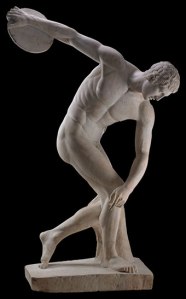




 Posted by bodybymitch
Posted by bodybymitch 